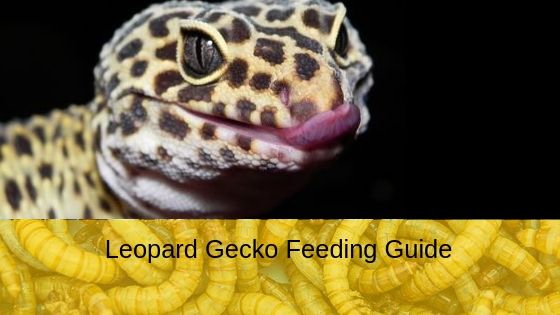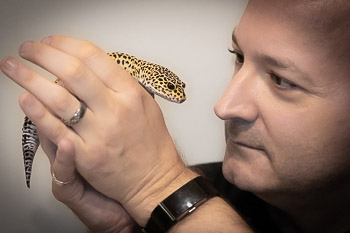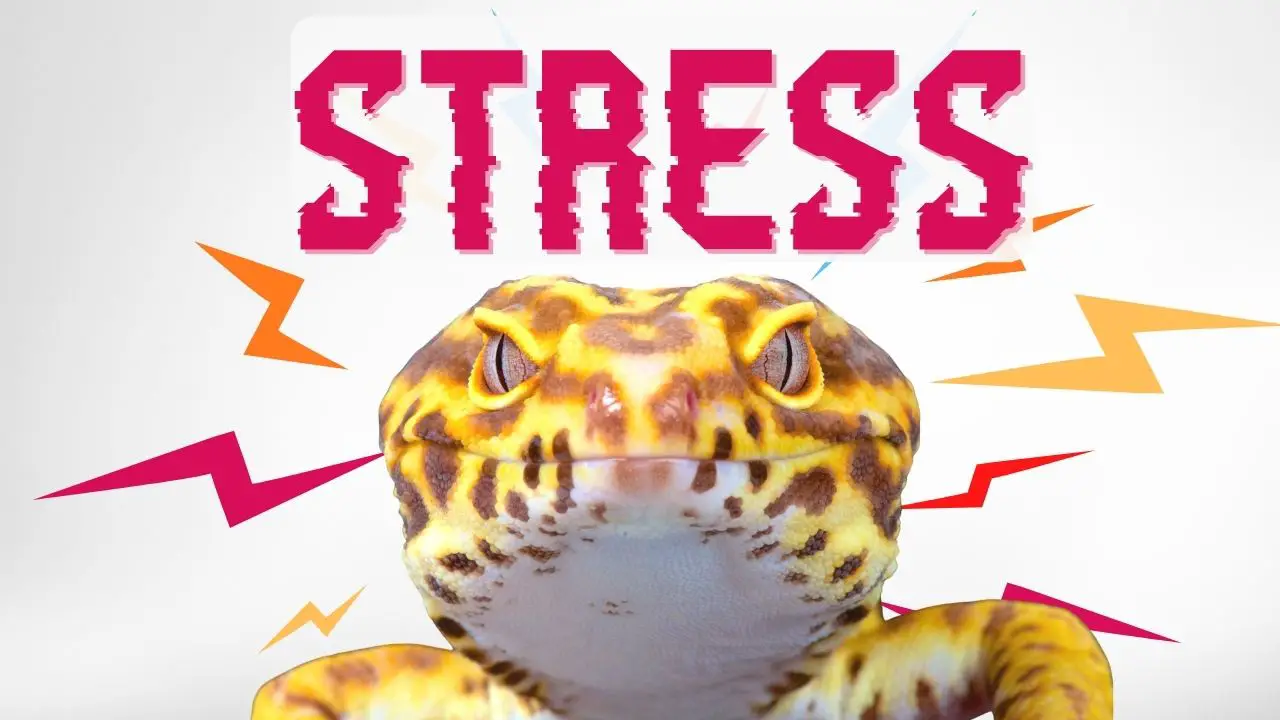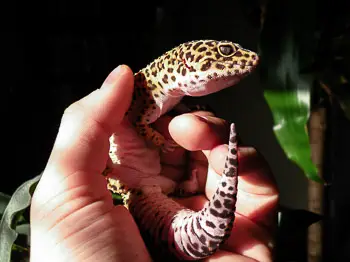What do leopard geckos eat?
Leopard geckos are insectivores, which means they eat live insects. Unlike other common pet reptiles like iguanas or bearded dragons, leopard geckos do not eat vegetables, fruit, or plants. In fact, leopard geckos are not built to digest plant matter.
What should I feed a leopard gecko?
A pet leopard gecko’s diet typically consists of mealworms and crickets. Some owners will also feed leopard geckos dubia roaches or waxworms.
Your gecko may be picky, or switch preferences from time to time. You may go through crickets like crazy, only to find your gecko suddenly looses interest in crickets. Simply try offering another insect.
Where do I find live feeder insects?
Mealworms and crickets are commonly sold at pet stores, and among the easiest feeder insects to find. Waxworms are also fairly easy to find. Your mileage may vary with some of the other choices
If you are having trouble finding insects locally or simply want the convenience of having your feeders delivered to your door, you can find what you need online.
It’s best your leopard gecko eats insects from a reliable source, and not something from the backyard. We’ll discuss this in more detail below.
What size insects for leopard gecko feeding?
Do not feed your leopard gecko an insect larger than the space between its eyes. It will not be able to properly swallow or digest insects that are too large. For a quick reference based on the age of your gecko:
- Hatchling – 3/8 inch crickets or roaches are best. They may also eat small mealworms.
- Juvenile – 1/4 inch crickets or roaches are best. They can eat small to medium mealworms
- Adult – Full sized crickets or roaches, large mealworms, or superworms,
So, now that we know what kinds of insects leopard geckos eat, let’s take a look at each of the most common options in more detail:
Mealworms

Mealworms are typically a staple in a pet leopard gecko’s diet. Though we normally think of the worm itself, mealworms are actually the larval stage of the darkling beetle. Here you can see the stages of a the mealworm’s life cycle, from larva, to pupa , and beetle.
Mealworm Life Cycle
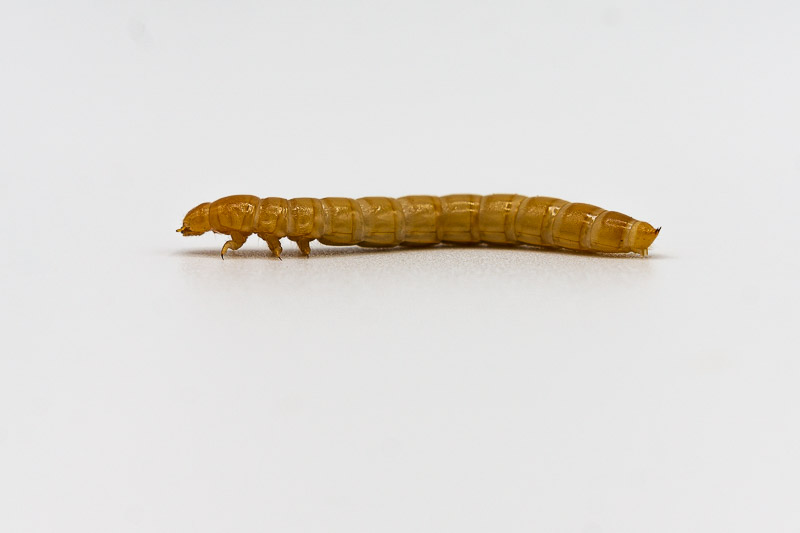

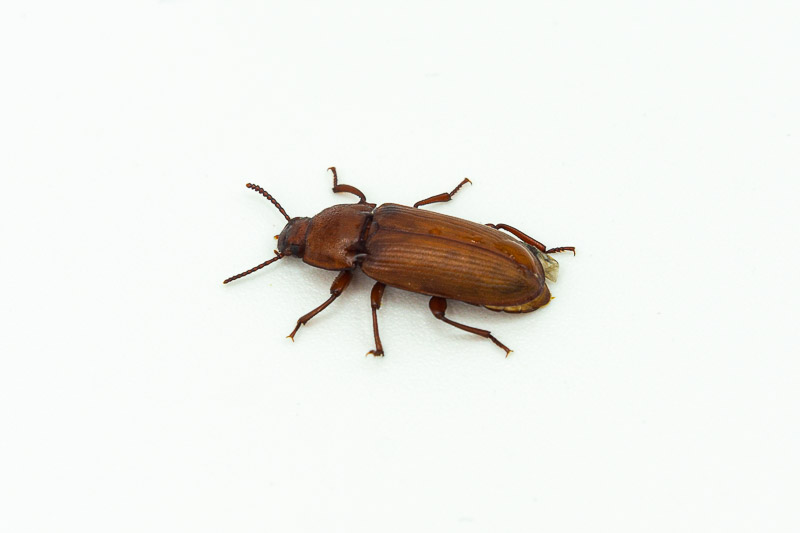
If you don’t refrigerate your mealworms, you’re sure to discover the mealworms will molt several times before changing into the pupae, and eventually turn into the beetles. You can see these changes seen in the photos above. It may look like 3 completely different insects, even though these are the same creature in different stages.

Refrigerating mealworms will slow pupation and prolong their shelf life as feeders. You can buy them in bulk online – check here for the best prices – though you can usually find them at a lower price at most pet shops. If you’re looking to reduce your feeding costs or make sure to always have a steady supply, you can refer to our guide on How To Breed Mealworms.
When refrigerating mealworms, make sure to let your worms thaw out and eat before it’s leopard gecko feeding time. We’ll talk about “gut loading” later, and why it’s important.
Mealworms alone do not provide an adequate supply of calcium, which is why a varied diet and/or supplements are suggested.
Do Leopard Geckos eat freeze dried mealworms?
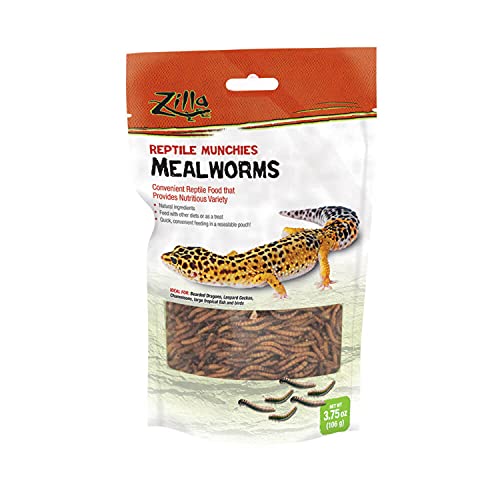
As a hatchling and juvenile, our gecko would eat freeze dried insects; I’d usually leave a few in the tank so there was always a food supply. This was safer than leaving live mealworms in a bowl that could be tipped over.
Live mealworms will try to eat just about anything and can bore into bark or branches and perhaps pieces of décor you may have in the tank. They can eat your gecko’s poop if they get desperate, which can make your leopard gecko sick. Mealworms can also bite young geckos. Tiny gecko toes can be especially vulnerable.
So, for a time, freeze dried mealworms served their purpose as a fallback that was always available, and safe to leave in the habitat.
Since reaching about a year of age, our gecko has had no interest in freeze dried mealworms. If it doesn’t move, it doesn’t so much as pique his interest.
Superworms vs Giant Mealworms
These feeders are for adult leopard geckos only because of their size. Superworms and giant mealworms are often confused, and sometimes mispackaged or mislabeled. Make sure you’re buying the product you want, and not something mis-marketed or mislabeled.
So, what’s the difference?

Giant mealworms are simply regular mealworms treated with a hormone (S-Methoprene) that delays their change into the pupae state and allows them to keep growing. They are simply older and (artificially) larger mealworms. Giant mealworms may eventually make it through the cycle to a beetle, but will be sterile because of the hormone. Because of this, giant mealworms cannot be bred.
You can refrigerate giant mealworms just like you can regular mealworms.
Superworms (Zophobas morio) are a similar looking but naturally larger worm. Superworms are also commonly referred to as King Worms or Morio Worms. Notice the darker coloring in the head and tail, and it’s easy to spot a superworm.

Superworms have less chitin (this is the shell or exoskeleton) and more meat than mealworms , which makes them easier to digest. For dietary considerations, superworms have a higher calcium and fat content and slightly less protein than regular mealworms.
Superworms are more aggressive and have a spike on their head that they may use to “sting.” This should heave little effect on an adult leopard gecko, and your gecko should quickly learn to take them head first.
Unlike mealworms, superworms should not be refrigerated. You can order them online here. If DIY is more your style, you may be interested in our Superworm Breeding Guide.
Waxworms
Leopard geckos love wax worms. However much your gecko enjoys waxworms, feed these in small doses and not at every feeding. Waxworms have a high fat content and should be offered only as an occasional treat.

Waxworms can be a great food to turn to encourage eating when nursing a sick gecko, or if your gecko has lost its tail and is on the mend.
You can usually find waxworms in pet shops, though (like nearly anything) you can also purchase them online.
Crickets
Crickets are another common feeder insects for pet reptiles, and are usually another staple in a leopard gecko’s diet.

You’ll need to keep the crickets alive, so you’ll need something like a “cricket keeper” to store them in. They will need food and a water supply, else they may die before your gecko gets a chance to eat them. A water pack is a simple way to provide hydration without risk of your crickets drowning. I’ll often feed the crickets vegetable scraps, and sometimes dry cat food.
Keep in mind that crickets make noise. They will chirp, which may be disturbing to you or your house mates. This is especially true if they get loose in your home!
Crickets may also develop a smell. Quickly. Plan on cleaning your cricket cage frequently to avoid the stink. Your leopard gecko may not stink, but the crickets will if not maintained.
Crickets should be easy to find at local pet shops, or you can buy them in bulk online. Make sure you are purchasing the right size for your gecko. You can check the best prices here.
Dubia Roaches
Dubia roaches are a less common feeder, though are gaining in popularity among reptile owners. The are a nutritious option to add some variety in your leopard gecko feeding plan.

Dubia roaches are easy to breed, and many reptile owners will keep a colony of roaches to cut costs and have a steady food supply.
They could make a great alternative to crickets if your gecko likes them. They live much longer than crickets, and it may be hard to believe, but the roaches are cleaner than crickets. Dubia roaches do not develop a smell like crickets.
Though they are active, they cannot climb smooth surfaces and do not jump, so are less likely to escape in your home than crickets.
Make sure you are getting the right size for your gecko to eat. As a general rule, don’t feed your leopard gecko an insect larger than the space between the gecko’s eyes. Dubia Roaches can be purchased in several sizes. Click the affiliate links blow to see the relative size scaled to a coin.
Can I catch my own insects to feed my leopard gecko?
You can, though this is generally not recommended. Insects caught in the wild may carry diseases, parasites, or pesticides that could put your leopard gecko’s health at risk.
You need to ask yourself if it’s worth the risk of a trip to the vet to find that cricket you found in the yard gave your gecko parasitic worms.
Store bought insects are sourced through known breeders, and are raised with reptile feeding in mind. It’s their business to provide clean bugs. These come from clean and disease free environments.
Alternatively, mealworms and dubia roaches are easy to breed and keep a steady supply on hand.
No Glow
Some insects, like fireflies or other luminescent insects are toxic to leopard geckos, and should net be offered to your gecko under any circumstances. If it glows it’s poison to your pet.
Gut Loading: What does it mean to gut load insects?
Your leopard gecko needs live insects, and you need to keep your insects alive until it’s time to feed your gecko.
Gut loading is the process of feeding your crickets, mealworms, etc. for 12 to 24 hours prior to feeding them to your lizard. If your insects are not well fed, they will be a poor source of nutrition for your pet. Ultimately, what your feeder bugs eat wind up in your gecko. I usually feed my insects vegetable scraps such as carrot peelings, potato slices, pieces of apple, etc.
Personally, I breed my own mealworms, and keep them fed at all times. General rule of thumb is to Feed your Feeders before offering them to your pet.
If you keep a dish with live mealworms in the enclosure, it may be a good idea to keep a small piece of carrot or apple in the dish so the worms are well fed when you leopard gecko eats them.
Supplements for Leopard Geckos
Even if you do a great job of gut loading your feeder insects, your leopard gecko still may not be getting all of the nutrients it needs. You can buy supplements to provide vitamins your gecko may not get enough of in its normal diet.

Calcium is important to young geckos as they grow to avoid Metabolic Bone Disease (MBD) and to breeding females for egg production.
D3, or Not D3
Leopard geckos typically do not bask in sunlight like many reptiles, and may not get enough vitamin D3. Be careful over supplementing with vitamin D3. D3 is fat soluble, which means it can be stored in your leopard geckos body. Too much will cause the vitamin to build up. Your gecko should not be getting D3 all the time.
Note that calcium for reptiles should be labeled “with D3” and “without D3.” Make sure you understand what you’re buying and what your leopard gecko is consuming. It’s best to alternate as to not overload your lizard with vitamin D3.
Administering Supplements
Some leopard gecko owners will keep a small dish of calcium powder in the enclosure so the leopard gecko can lick the powder at its leisure. Sprinkling some supplement dust on a rock is another option.
Another way of delivering supplements to your leopard gecko is through dusting the food that it eats. This is how most reptile owners give their pets supplements.
Dusting Feeder Insects
Feeder insects can be dusted with calcium and/or vitamin powder prior to being offered to your gecko.
Most lizard owners will place a small amount of the powder in a plastic bag or container, place the insect inside, and lightly shake until the insect has a thin coating of the powder. You could also try a cricket shaker if you want something specially designed for this purpose.
You’ll want to feed the insects to your leopard gecko right after dusting to make sure your gecko gets as much of the supplements as possible. If left too long, the supplement powder will rub off.
Crickets may be the easiest insect to dust, though you may try you luck with others. Mealworms are general too smooth for much of the dust to stick.
How do I feed my gecko if I don’t like bugs?
Some folks just reach in and grab a few mealworms to toss into a feeding dish. Crickets and dubia roaches may be a bit more of a challenge to wrangle. But what if you’re just squeamish and the though of picking up a bug makes you want to run in the other direction?

No problem. Just use tweezers. They extend your reach and make it easier to pick up insects that are hard to pick up.
Aquarium tweezers are great for this purpose.
Are there foods a leopard gecko should not eat?
Leopard Geckos shouldn’t eat fruit or vegetables or “human food.” We have a full post on foods leopard geckos should not eat!
How often should I feed my leopard gecko?
Your gecko’s needs will change in different stages of development, therefore its feeding schedule should change to match. For instance, when your gecko is young, it will be growing rapidly and need ample energy to do so. As your gecko ages, it will not need food as often. You can use the following as a quick guide for feeding and supplements:
- 0-6 months
- Feed every day
- Dust 5 days per week
- 6-12 months
- Feed every other day
- Dust every 3rd feed
- 1 year or more
- Feed every 2-3 days
- Dust every 3rd-4th feed
You may also find your leopard gecko’s appetite to be somewhat seasonal. Don’t be surprised if it slows down slightly and does not eat as much during the winter.
Leopard Gecko Feeding Time
When is the best time of day to feed your leopard gecko? Leopard geckos are crepuscular, which means they are most active during the twilight hours around dusk and dawn.
As a result, early evening or early mornings are when they would typically hunt and feed naturally. Dusk or dawn would be a preferable time to feed your leopard gecko.
What about water? Do Leopard Geckos Need Water?
Yes, like most animals, your leopard gecko does need water. You should have water available at all times. The bowl should be shallow enough for your gecko to easily get to the water, but not so deep as to present a risk of drowning. You can read more about water consumption in this article: Do leopard geckos drink water?
Free Feeding Log:
Never miss a feeding again. Keep track of when, what, and how much your leopard gecko eats:

